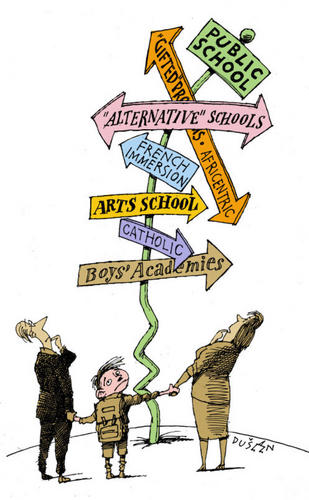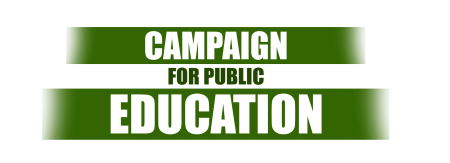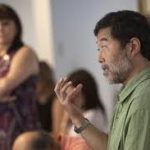Saving public education
 Rick Salutin, March 25, 2011 Saving public education: Too many choices This story & image credit: thestar.com
Rick Salutin, March 25, 2011 Saving public education: Too many choices This story & image credit: thestar.com
It isn’t easy arguing against school choice. Let me try to make the case.
There wasn’t always much choice in Toronto schools. You went to your local school, right through high school. You might take an extra language or music course. And there was the vocational “stream.” End of choices.
thestar.comNow you can be in French immersion from senior kindergarten. You can be in a gifted program or an “alternative” school. You can choose an arts high school, among several. There are schools for cyber-arts, entrepreneurialism, integrated technology and the international baccalaureate. There’s an Africentric school, and there may soon be “academies” for boys, girls, choirs and jocks. Some are stand-alone, some are independent but in existing schools, some are part of regular schools. Even in early years, you can apply for a school outside your local area. Admission procedures vary almost case by case; some are competitive, some by lottery. My question is: do we lose as well as gain with this much choice?
Let me do a quick cut to the chase by way of charter schools in the U.S. They aren’t the same but they’re the ultimate version of school choice there, which is how they’re sold. (They’re the schools hailed in the recent documentary Waiting for Superman.) They’re paid for by public funds but run privately. They amount to privatizing the public system on the public dime, topped up by foundation and corporate money. Statistically, they do no better and often worse than the public schools they badmouth. In math, in 2009, 17 per cent of charters posted scores better than comparable public schools while 37 per cent were “significantly below.” They’re at best a quick fix for the few. But they can and do drain the life out of the public system there and leave it even more of a demoralized shell than it is now. That’s the risk in going hell-bent for choice: you undermine the only real choice for most families — public schools.
Michael Barber was a key player in education “reform” in the U.K. during the Tony Blair years. He now acts as an international consultant; among those he advises is Ontario Premier Dalton McGuinty. He says we need to “bind” the rich to the public system via reforms like school choice or they’ll desert it for private schools, and “full-scale privatization” could follow. Toronto District School Board director Chris Spence echoes this when he says we need to establish separate “academies” to offer “what have traditionally been private school opportunities within the public system.” Yet those choices, if they happen, will peel off some of the best principals and teachers, along with vocal parents who’d otherwise exert pressure for system-wide improvement. Spence says it’s “about retaining and attracting students,” but at what cost — cannibalizing and undermining the mainstream schools?
That’s the real danger of these special schools and programs:
• They break down cohesion in local communities and neighbourhoods by sending kids scuttling all over the city. Toronto’s strength lies in its neighbourhoods, and schools are a big part of that.
• They deprive kids of the stimulation of different types of minds, experiences and skills, in the same classrooms.
• They take pressure off the system to improve for all kids by giving certain insistent groups what they demand.
• They take the wrong direction: fragmentation rather than integration.
Oh and by the way, research suggests that if you “control” for things like income, private schools do no better than public ones. The same kids get the same marks in either!
Many teachers and principals seem pragmatic about most of these programs. They’ve seen flavours of the month come and go in education. If it helps some kids with particular needs or interests — why not?
Could you respond to those needs and talents without fragmenting and undermining the larger system? Yes — by sending the programs into each school, instead of scattering the kids to centralized programs. A model is special ed.
For kids with especially serious disabilities, there are separate, wonderfully humane places like Beverley School. But whenever possible, these kids go into mainstream schools, either in separate classes or in “normal” classrooms. Either way, they’re part of a larger school community. It benefits all kids, not just special-ed kids, and is one of the glories of the system. You could say it anticipates other forms of inclusiveness not yet achieved.
This goes for kids with behavioural and discipline problems, too. I once saw a kid kill a butterfly in a schoolyard after school. It had been bred in his class. Parents looking on were furious and said so. But his classmates were less judgmental; they knew his home situation and his constant need for attention. Making an issue of his act, they said, would only aggravate things. It’s that kind of empathetic insight into your society that an inclusive school can deliver.
In Finland, which has an extraordinarily successful public system, special-ed kids go into mainstream schools very early; the Finns say this builds social cohesion and raises achievement levels. Saskatchewan has a category called “community schools.” It aims to meld the two terms. Rather than sending kids elsewhere to meet special needs concerning, say, alcohol or violence, they put the social service workers right in local schools, where they work with teachers and go into classrooms. The problems get normalized and discussed there by everyone rather than stigmatized and ostracized. I think the same could hold for kids with special talents: mix them in, rather than separating them out.
The influential American philosopher of education John Dewey said private schools may have a social spirit, but it’s no more like the real world beyond school walls than is the social spirit in a monastery. We risk that kind of narrowness by cloistering kids in special programs and schools.
Let me try to make the point by way of the definitive separate program: publicly funded Catholic schools. They’re so separate they are their own system. That has to do with the French-English roots of Canadian history, not with recent ideas about school choice. But there are elements in the Catholic tradition that would be useful in any school, religious or not. I heard an Ottawa Catholic official tell a meeting on what makes a great principal, “Everyone wants Jesus Christ with computer skills.” The whole room perked up. He had access to a set of images that non-religious people don’t; it helped put things in perspective. I met a principal at a Regina Catholic school who said every night she asks herself if she treated each student as a Christ child that day. At another, a principal said when he deals with fighting, he might ask kids if they feel this is a Christian way to act. You don’t have to be Catholic, or even religious, to get the point of these images.
I don’t see why you couldn’t, over time, integrate Catholic and other spiritual sensibilities into the public system, in an open-minded, tolerant way. We need all the resources we can get, and so do our kids. Someone I know says her daughter saw a Bible and asked, “What’s a ‘bibble?’” It enriches kids to know about the bibles of various religions and world views. It may just be fantasy at this point, but one can imagine reintegrating separate schools into the public system without totally defrocking them, to everyone’s benefit. Maybe the dogma parts could be kept aside for Sunday school or — well, I haven’t worked it all out yet.”
People sometimes sound guilty or apologetic about sending kids to private schools. I think that’s a non-issue. As a parent, you do what seems best for your kids. But as a citizen, you should support the public system and strengthen it where it’s weak. The question is: how do you do that? Is it by cutting it up into bite-size pieces and trying to accommodate every taste separately? Or is it by emphasizing the unique strength of the public system: its inclusiveness, the stimulating variety it provides to all kids when they meet and get to know each other? Trying to save public schools by chopping them to bits and “privatizing from within” is like destroying the village in order to save it. Maybe there should be an oath for educators, like the Hippocratic oath for doctors: First, do no harm.
It’s the exemplary special program. Kids in it learn French but others, despite taking French daily starting in Grade 4, often learn nothing. If there was no French immersion, parents whose kids now take it would be screaming for better results in regular French classes. Learning another language is a kind of breakthrough skill, fruitful in many ways; we’ve effectively abandoned it except for immersion. In New Brunswick, where bilingualism is like a civic creed, they cancelled French immersion because, according to then education minister Kelly Lamrock, it created a two-tier system and helped drag down the overall scores (not just in French) of the vast majority of kids in public schools.
“Alternative” schools
Many of these began in response to middle-class parents who wanted individualized treatment for their kids in smaller settings. They often have a precious, elite quality. You feel it at their open houses: an implication that if you stick with the main system, you’ll be warehoused with the masses. There have been efforts to create alternatives for poor immigrant kids, but they tended to fail. “This reverses the traditional dynamic of public schools,” said one teacher, “which immigrant and working-class families saw as a road to integration and advancement.”
“Gifted” programs
These involve separate classes for “brighter” kids, based on tests for verbal and spatial skills. Middle-class parents often push for their kids to take these tests, so those children may be overrepresented. “Gifted” is an unfortunate term, since all kids are gifted. (That isn’t rhetoric; I’d call it a fact.) Some of these kids also fit the learning disabilities (LD) category. Whenever possible, LD (and developmentally disabled) kids are integrated in regular classrooms and it works well. It may not help kids who are “gifted” and LD to mark them off doubly. Besides, there are many forms of intelligence. They can complement each other. I don’t see the value of isolating some modes from others.
Arts schools
Personally, I dislike the cult of the artist and art, because it separates art from everyday life and “ordinary” people. Of the four arts high schools in Toronto — there are also five elementary arts schools and several programs — the one with the least artsy quality is Rosedale Heights. It doesn’t audition; anyone can go; you get no advantage because your folks could afford lessons. Barrie Sketchley, its veteran principal, didn’t start with an arts agenda. When he went there, it had been a vocational school. The NDP government of the time wanted to try bringing together kids who’d been “streamed” in separate academic or vocational directions. But, Sketchley says, you needed some cachet to attract kids. They settled on arts. He’d always loved the arts, but his real drive was to “create a place for vulnerable kids with an air of acceptance.” He says the level of achievement may not be as high as at audition schools, though many kids are talented and the place buzzes with theatre, dance, etc. In a sense he’s created a separate arts school without much sense of separation. In a system with a deep-rooted feel for culture, the arts would be equally available to all kids in all schools — but it’s a start.
Africentric schools
For decades, African-Canadian parents demanded help for underachieving kids and got nowhere. Almost any effort would be justified as a remedy, and this school has already produced decent results on provincial tests: its 16 Grade 3 students outscored both Toronto and Ontario averages. But Toronto teacher Lisa Guthro, who just moved from a poor to a middle-class school, says, “Ask my new students about Africa and they say, ‘Who lives there?’ They need courses on Africa as much as those kids do.” I know my own kid would love it; he’s fascinated by tales of slavery and freedom. Wouldn’t it be good for African-Canadian kids to see his admiration for their past? Besides, special schools will never serve to raise the level of all the kids in need, and the Africentric school may have removed some of the strongest parental pressure for action. You can make a better case for this alternate school than the others, but the “logic of choice” works to undercut the wider system here too.
Boys’ academies
This means setting up schools for boys only. Toronto board director Chris Spence is their main promoter; they haven’t been implemented yet. He’s written a book promoting them, in which he bases a large part of his claim that boys and girls learn differently on observations of his own kids and their friends (“little girls . . . flirt, they pout, they manipulate. . .”). He cites an experiment when he headed the Hamilton board, but it was only with two classes for one year; the evaluation was limited to a grad student’s interviews with eight kids and a follow-up survey of 62 kids. He acknowledges that “overall, students did not rate the single-gender experience favourably.” But he still maintains “the idea of all-male classes and schools make sense.” He’s relied on a U.S. author, Leonard Sax, a psychologist and family physician, whose views have been disputed by other experts there, largely on whether Sax makes too much of small differences in learning between boys and girls. The critics say the differences among boys are larger than those between boys and girls. Yet, Spence wants to push ahead on this front strongly, not just with boys’ academies but other types. It seems likely his real motive is to do something for ill-served, mostly black “inner-city kids,” for whom “radical measures are in order.” He’d have done better to just say that. Instead, it’s as if he chose to bolster his case with arguments about gender and choice, then sweeten it with other academies — 16 in all, for girls, choirs, athletes, etc. That could open the way to even more “choices” that might ultimately include, say, religious schools or charter-like private schools paid for with public funds. That would drain further funds and talented personnel away from the mainstream schools, where most kids, inevitably, will be found.



